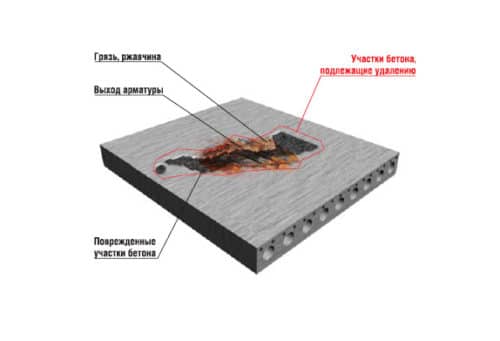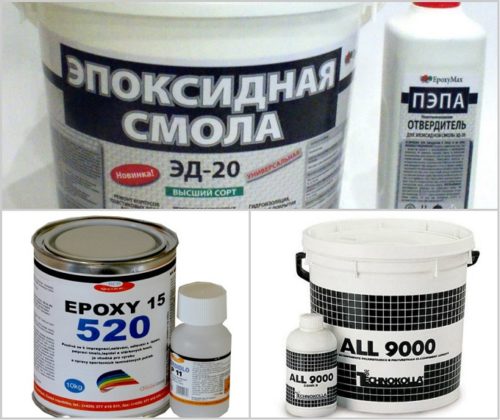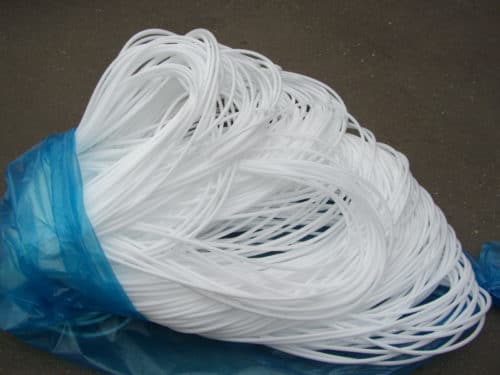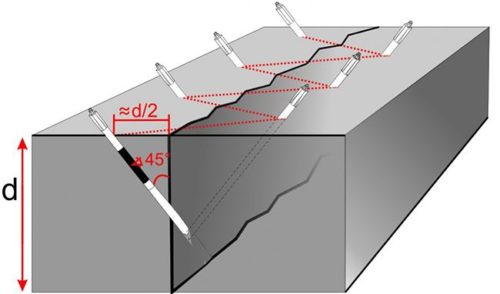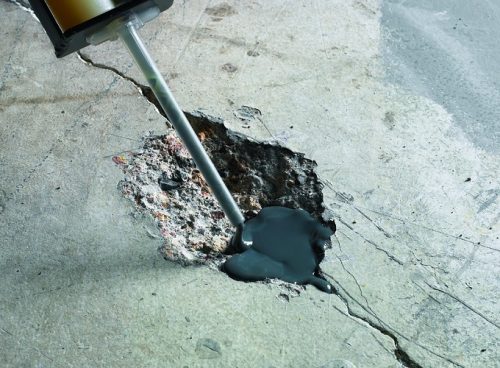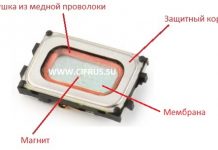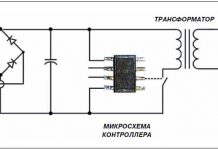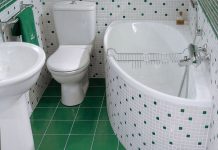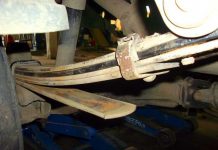VIDEO
The content of the article:
Causes of destruction
Repair technology
Materials and tools
Surface preparation
Removing potholes
Sealing cracks
Leveling irregularities
Overhaul
Repairing a concrete floor is a rather demanding process. The reliability of the coating and its durability depend on the correctness of its implementation. Subject to a number of rules, you can do it yourself, without involving professionals in the work.
After a certain period of time after the installation of the concrete floor, even if the basic operating requirements are met, it will begin to require repair. Before proceeding with these works, you need to make a preliminary diagnosis. This is necessary to select the appropriate surface repair technology and the required mixture.
The main reasons for the destruction of a concrete floor:
Subsidence of the soil under it due to the shrinkage of the structure, poor heating during the cold period, poor quality of preparatory work, the effects of groundwater, external effects of moisture, and other factors. Most often, for such reasons, internal destruction of the structure occurs, and the external side remains unchanged.
Deformation and destruction as a result of violation of installation technology, external influences immediately after pouring.
In addition to destructive factors, the nature of the damage is of great importance:
Local ... This is the formation of cracks or pits in one place. In this case, it is enough to take measures to eliminate the influencing factors and carry out spot repairs.
General ... Requires complete removal of the old coating and installation of a new one.Based on the causes and nature of the damage, the concrete floor screed should be repaired. It is necessary to eliminate such damage: peeling of the upper layers, significant shrinkage in the first hours after installation, the appearance of cracks, pits, chips, dusting of the upper layer, significant wear of the coating.
After you have estimated the nature of the destruction and the scope of future work, you need to purchase or rent a tool and buy materials. Next, we determine the procedure for carrying out repairs. You can do it yourself if you strictly follow the technology.
Modern construction stores offer a huge selection of ready-made mixes for concrete floors. These can be simple mixtures or with the addition of various additives that improve the properties of concrete.
Most often on sale you can find compositions with high rheological and thixotropic properties. They are made on the basis of epoxy resin and polyurethane. These ingredients significantly improve the quality of finished floors, extend their lifespan and prevent cracks, unevenness and dusting.
If the amount of work is small, and the house is stable and the floor has a low load, then you can make a mixture with thixotropic properties yourself. To do this, mix PVA glue or bustilate with water in a 1: 5 ratio and mix a 1: 3 cement-sand mixture on this suspension.
For a significant amount of work, you will need a PVA putty and a thixotropic primer. For small cracks and chips, it is better to choose a PVA suspension.
The concrete solution should have a homogeneous structure and be "dry" at first glance. You will not be able to achieve this state by mixing it manually. Moreover, it is necessary to introduce a suspension or ordinary water into the preparation composition in small quantities, constantly monitoring the consistency of the mixture. That is why it is best to use a special mixer or mixer attachment for a drill (perforator) at home.
The mixers offered in stores today are distinguished by a rich configuration and a large run-up in pricing. If you wish, you can make your own device at home. To do this, you need a one and a half meter bar with a diameter of up to 10 mm. Using pliers, it must be bent in one direction in a semicircle or a ring.
If the volume of the floor to be repaired is significant, it is better to give preference to a small concrete mixer.
In addition to the equipment listed, you will need mixing containers (most often plastic or galvanized buckets are chosen for this purpose), wide spatulas, levels and rags.
After you have purchased all the necessary materials and tools, you can start preparing the floors. In order for the screed to lay down in the right way and serve you for a long time, you should carefully approach this process.
This procedure consists of the following steps:
First, you need to completely free the room from various pieces of furniture, carpets and other elements.
The next step is to thoroughly dry the floor in a well-ventilated area.
Large pieces of loose concrete must be collected with a broom (broom), and then, after sprinkling the floor with water, thoroughly sweep the entire room with a broom several times.
Any cracks, pits or chips in the floor must be thoroughly blown out using an industrial hair dryer or a household vacuum cleaner.
Rust, mildew or old putty can be removed with a metal bristle brush.
If there are paint or grease stains on the floor, you must use a special chemical solution, which can be purchased at the store.
If reinforcement is laid in the floor, then it must be thoroughly cleaned and coated with an anti-corrosion agent.
After carrying out these activities, you can proceed to the sealing of cracks and potholes.
Over time, under constant mechanical stress, potholes or small pits can be observed in the same place. They must be removed as soon as they are discovered, as they lead to further destruction of the concrete pavement and the need to redo the screed throughout the room.
The process of repairing potholes in a concrete floor boils down to the following steps:
Using a diamond disc, cut a pothole around the perimeter up to 2 cm deep.
Using a hammer drill, break the old concrete into pieces.
Using a broom and a vacuum cleaner, we thoroughly clean the surface of the formed debris. It is also recommended to walk on the floor with an industrial hairdryer or sandblasting.
We cover the prepared potholes with epoxy primer.
Fill the holes with the ready-made solution. With a pothole depth of more than 5 cm, it is best to lay the mixture in layers of 1-2 cm. The next one should be poured only after the previous one has frozen.
Using the rule (rail), level the surface.
After the composition has hardened, we grind the repaired area. In this case, be sure to measure the floor level with a building angle. This will allow you to get a flat surface without bumps and depressions.
In the same way as the elimination of potholes, the removal of cracks in the concrete screed is also local in nature. It is necessary to eliminate them immediately after they are discovered. This is due to the fact that the crack reduces the strength of the floor and contributes to its early destruction. In addition, debris, dust, moisture and so on begin to get into it. She begins to dust and stain the room.
The smaller the crack, the easier it is to repair. Therefore, do not postpone the work of eliminating it. The sequence of repairing cracks in a concrete floor is as follows:
If the depth of the crack is not more than 2 cm, then we increase it by 1 cm. If the depth is greater, then we increase it to 5 cm. For this, it is best to use a diamond disc. It will turn out smoothly and neatly.
If the crack is of great depth, then we make additional ditches on both sides of it and only then proceed to deepening.
We carefully remove the crushed concrete, and the surface is cleaned of dust using a vacuum cleaner, an industrial hair dryer or a sandblasting machine.
Now we proceed to treat the edges of the groove with a primer based on polyurethane or epoxy resin. Before applying, it must be diluted with a solvent or white spirit in a ratio of 1:10.
Fill with ready-made solution. It is best to choose a polyurethane or epoxy mixture pre-thinned with quartz sand.
We fill deep cracks in layers. Only after the first layer has frozen should you start laying a new one.
When the concrete solution has dried well, we grind the resulting surface, constantly controlling the height with a level. Thus, we get a smooth, even floor.
If the crack being repaired is wide, then it should be reinforced with ordinary reinforcement. For this, shallow grooves are cut at the base at regular intervals. The fittings are laid in them. Now you can pour the finished solution in layers.
There are times when the presence of irregularities in the surface requires a local repair of the concrete screed. They can appear both in old houses under the influence of constant gravity in one place, and in new ones.
To remove this defect, a grinder is most often used. If this is not the case, a grinding attachment for a drill will do.
Sequential repair comes down to the following steps:
We thoroughly clean the area to be treated from debris and dust.
Impregnate with a solvent-based primer based on polyurethane or epoxy resin.
Fill the prepared area with a solution and level it.
When the concrete mixture has hardened, we grind the surface to the general level of the floor.
There are often cases when concrete screed problems are not local, but general. In such cases, the entire surface becomes unusable and requires a complete replacement.
It is necessary to overhaul the concrete floor if there is 30% damage to the entire surface. The old screed is also removed when laying a warm floor or replacing old linoleum (laminate, parquet) with a new one.
It should be remembered that in the room being repaired, the floor level should be the same as in the adjacent one. The screed level cannot be higher than the threshold. Consider these requirements when troubleshooting problems.
The sequence of overhaul is reduced to the following:
Before starting the repair, we calculate the thickness of the new floor. In this case, you should go from bottom to top. This is necessary in order to correct the deficiency by laying litter if the level is less than required.
We thoroughly clean the surface to be repaired from debris. To do this, you should use an industrial vacuum cleaner or a special compound.
We treat the prepared surface with a primer. This will provide the necessary grip. If there is high humidity in the room, then a primer should be chosen with moisture-repellent properties.
Before processing, we carefully grind the surface cleaned from the old screed. In this case, you will need a sander that can be rented.
Let's start applying the primer.
After the impregnation has dried, we begin to pour the concrete screed. This must be done in stages. To begin with, we fill in a self-leveling mixture for repairing a concrete floor. The resulting layer should be 5-10 cm.
On the finished surface, be sure to go through a needle roller. This will remove air bubbles from the concrete.
After the first layer has set, apply the second if necessary.
When the concrete screed hardens, we carefully check the surface for defects before the bequest grinding.If there are any, they must be removed immediately. Thus, you will extend the life of the renovated floor.
It is possible to install objects or act on the surface of the concrete screed in a different mechanical way not earlier than in a month. By this time, the floor is completely dry.
How to fix cracks in concrete floors - watch the video:
VIDEO
Often, construction technology provides for the presence of concrete floors. This is due to the high technical characteristics of the components of the mixture. The finished coating is affordable, durable and practical. It perfectly acts on its own, and serves as the basis for subsequent finishing with any floor materials. However, for a number of reasons, the base is deformed and becomes unusable - cracks appear, dust formation increases. The formed defects reduce the strength and reliability of the screed. In this connection, during the repairs carried out, it will help prevent further destruction. The article will consider the technology of repairing concrete floors.
Before starting surface restoration work, you must:
conduct a visual inspection to assess the condition;
identify the reasons that led to the result.
Based on the data obtained, the elimination technology is selected. In case of minor damage (potholes, lonely cracks), it will be enough to carry out local repairs. If the area of the site to be repaired is more than 30-35% of the area of the entire premises, then here we will talk about capital work.
There are several known main reasons that negatively affect the concrete pavement. They are conventionally classified into 3 groups: soil impact; external influence; internal factors.
To the first point includes poor-quality soil compaction, winter swelling of the earth and the proximity of groundwater. Such factors lead to formation shifts, and as a consequence - the destruction of the concrete floor.Second point suggests a negative impact on the base due to the use of a poor-quality solution, as well as pouring, carried out in violation of technology. Here it is necessary to note such a common reason as the shrinkage of the house, which creates some movement.In the third paragraph there are such factors as: natural wear of the coating, mechanical stress (falling of heavy objects) and prolonged exposure to moisture, for example, during flooding.After analyzing this information, you can proceed to eliminate the causes. Only after this can we talk about the benefits of repair work, otherwise all the restorations carried out will be useless.
Work begins with freeing the room from furniture and other interior items. If there is a floor covering on the screed, then it is dismantled. All debris and dust is removed. Much attention is paid to damaged areas. It is there that a large number of exfoliating elements accumulate.
Old primer deposits, rust and other contaminants are removed with a wire brush. Then it is necessary to make incisions on the repaired area, which will increase the adhesion between the material and the new concrete.
Chips and dust generated in the process are swept away with a broom. A construction vacuum cleaner will show a good result in cleaning. The surface must be treated with a degreasing impregnation or primer.
The degree of damage to the coating determines the complexity and type of subsequent work. If the financial means allow, then it is possible to carry out a major overhaul of the concrete surface in order to significantly extend the operational life of the floor.
To eliminate shallow potholes and crevices, you can use a solution with the addition of PVA, prepared at home. First, dilute 1 part of glue with 4 parts of water. Then, diluted PVA is added to the prepared dry cement-sand mixture (1: 3) until the optimum consistency is achieved.
More serious problems are solved by using building mixtures. In such concrete floor repair compositions, specially selected components guarantee ultimate strength and high resistance to mechanical damage.
The locked powder composition is thoroughly mixed with a mixer. The use of such equipment will allow you to perform the process more efficiently. The ready-made mortar penetrates deeply into the concrete structure and forms a single monolith with the original surface.
For damaged areas of small areas, local work can be dispensed with. The following are subject to cosmetic repairs:
indentations;
cracks of various depths and widths;
hair slits (cobweb);
minor irregularities.
Despite minor defects, work should be started immediately. The smaller their size, the easier it is to tidy the surface. An increase in existing cracks will lead to their growth, and as a result to deformation of the floor covering.
They usually appear as a result of long-term presence of furniture or bulky equipment in one place. Often the reasons for the appearance are mechanical impact, for example, falling of an object from a height.
Elimination technology
With the help of the tool, the defect expands and deepens. This is done in order to exclude the possibility of leaving loose pieces of concrete on the site. The depression is cleaned and primed. Filling is done with epoxy or adhesive.
The solution is pierced several times with a metal pin. It is important to remove any air voids and distribute the mixture evenly in the resulting groove. Horizontal alignment is performed with a wide trowel or a building rule. After drying, the area is sanded.
If the depth of the pothole is more than 5 cm, the technology of filling the mortar is somewhat different. Here the mixture should be poured in several stages in order to avoid the formation of cavities.
Flaws of this kind appear due to the shrinkage of the structure or foundation. Temperature extremes, incorrect proportions of the concrete composition, and the absence of reinforcing elements can lead to deformation.
Elimination technology
Using a hammer drill or a hammer with a chisel, the gap is widened both in width and depth. Carefully inspect the surrounding area for hidden defects that, after a while, will lead to repeated surface repair.
The groove clears concrete debris and dust. A polyurethane primer is used for processing. A mixture is laid in the crack, and then leveled with a spatula or level.
If there are cracks of large width, auxiliary grooves are made on both sides with a grinder. They will serve for laying metal grips, the distance between which should be 25-30 cm. All recesses are filled with mortar.
This kind of deformation cracks can appear when the mortar dries out too quickly. They are not fraught with danger, but they are quite capable of expanding over time. The cobweb is almost invisible. Its identification is possible by wetting the surface.
Elimination technology
It is enough to treat the so-called hair gaps with a primer and seal with an elastic sealant. If weakened areas are observed along the edges of the crack, it is recommended to clean the delamination.
The resulting groove is cleaned of foreign inclusions and treated with primer solutions. For embedding, you can use your own composition or purchase ready-made mixtures of various grain sizes.
As a result of pouring, it is not always possible to obtain a perfectly flat floor. This is due to non-compliance with the technology of these works. Flaws appear due to neglect to install beacons, improperly mixed cement mass (too liquid or thick). Therefore, after drying, "waves" are formed.
Elimination technology
The crests of the waves are removed using a grinder with a trowel disc. The work is dusty, therefore personal protective equipment must be used. If the area to be treated is large, it makes sense to contact a specialized company. In their arsenal there is equipment that, together with grinding, sucks in dust.
The depressions are cleaned out and deepened. They are treated with primers or diluted solvent. The recesses are filled with mortar, you can also use self-leveling mortars.
Thorough work will be needed if:
there are extensive damage (over a third of the total area);
the "warm floor" system is being installed;
there is a desire to completely renovate the old concrete screed.
Such work can be carried out using the following technologies:
laying a wet screed using a standard cement-sand mortar;
pouring a self-leveling mixture, which include plasticizers, stabilizers and fiberglass;
installation of a dry screed, including backfills, followed by laying gypsum fiber sheets (GVL).
Each case requires a different set of materials for repairing a concrete floor.
Renovation work begins with the removal of debris and dust removal of the surface. It is necessary to remove all flaking areas that can subsequently significantly affect the strength characteristics of the new floor.
Next, the flooring of waterproofing materials is made. A huge selection will allow you to purchase products with the most suitable properties at an affordable price. The next step is to place the beacons. Their step should be slightly less than the length of the used rule.
Mixing of concrete mortar is carried out in accordance with the current proportions. The ratio used depends entirely on the grade of cement used and the desired strength of the finished mixture. Water is added until the required viscosity is reached.
Pouring is carried out in small portions. This will help to distribute the mixture evenly without creating voids. It takes about 30 days to completely dry, during this time it is advisable to avoid any mechanical effects on the surface.
Special formulations allow for leveling with minimal labor costs. After inspecting the surface, all existing delamination is removed. In the presence of contamination, treatment is carried out with a solution of copper sulfate.
Seams and cracks are repaired with repair mortar. Waterproofing materials are necessarily spread. If pouring is done on an old coating in good enough condition, then the step with waterproofing can be skipped.
If you plan to pour a mixture with a thickness of more than 10 mm, then it is recommended to pre-install profile beacons. Work starts from the far corner of the room. The solution is fed in portions and leveled with a needle tool.
Already after 8 hours, small influences can be exerted on the surface. The floor will be ready for full use after 5 days. Then they already move on to finishing (laying decorative flooring).
VIDEO
Such a device has some advantages over "wet" work. For example, it does not require drying time; installation can be carried out regardless of the temperature regime. In addition, the floor is characterized by high levels of noise and heat insulation.
First, the floor is marked. A plastic film or any vapor barrier material is spread. Then lighthouse rails are installed, which allow you to adhere to the desired level. The horizontality is checked with special tools.
Expanded clay, vermiculite, perlite or compavite are poured between the profiles. Starting from the doors, sheet material is mounted from right to left. Its spread is carried out in a breakdown (not less than 25-30 cm). Move with caution on the laid sheets.
Fastening is done with special self-tapping screws, the pitch of the screws should be at least 30 cm. For additional fixation, mastic is used. If necessary, you can lay a second layer of sheet material without overlapping joints in any direction.
The concrete surface, with its solidity, has the property of dust formation, which occurs due to various mechanical loads. Invisible particles negatively affect human health. Wet cleaning cannot solve this problem.
The following will help to avoid harmful effects:
clean the surface as much as possible;
carry out the treatment with a primer;
paint with a material that will prevent the concrete from flaking.
Here you can use products based on polymers that form a protective layer of various thicknesses. For rooms with minimal loads, thin-layer materials (up to 150 microns) are used. Neomer-LP or Elakor-PU.
In living rooms with intensive traffic, Elakor-ED, Retroplate or GruntElast-PU are used. The protective layer of such products is over 250 microns, which allows them to withstand high loads.
Due to its deep penetration, the concrete screed is characterized by:
resistance to temperature extremes;
moisture resistance;
lack of dust formation;
high wear resistance.
Timely noticed flaws and their immediate elimination will help to increase the service life of the surface. In addition, it will avoid more expensive and time-consuming concrete floor restoration work. Exact adherence to all stages of repair work will lead to an impeccable result.
An even floor is a prerequisite for renovating an apartment. It is important to keep it in good condition after renovation. If the floor has undergone deformation, it is necessary to find out and eliminate its cause, to repair the floor screed.
The floor screed, even if it was made exactly in accordance with the competent instructions, eventually deteriorates. This is not surprising, because it experiences colossal loads from the weight of the flooring, furniture, movement of people and other dynamic influences. Therefore, to prevent a complete loss of its operational properties, it is periodically necessary to repair the floor screed.
To get an idea of the degree of surface deformation, you must first completely remove the old coating, clean the floor from debris, dust and dirt. Next, you should decide on the type of deformation and repair that will need to be done.
One of the following may occur:
The flat surface has small pits and some cracks, the level of dust formation is increased. These damages are not scary, they are easily repaired with minimal loss of time and money.
The screed is peeling off, the surface is cracked deep enough in some places. This type of deformation must be repaired, but it will be necessary to use special building mixtures.
The surface is significantly curved, the floor is covered with deep cracks. Repairing damage of this magnitude is available only to professionals with the appropriate skills and techniques.
Before proceeding with the repair, you should pay attention to some procedures that will tell you which way to eliminate flaws is suitable in each specific case. Necessary:
identify the cause of the deformation;
identify the presence or absence of expansion joints (if they are not there, then it is necessary to take care of the gasket);
determine the method of pouring the cement mixture and the type of base on which the floor was laid;
find out if the concrete is flaking by tapping the surface with a hammer.
These recommendations must be followed in order to avoid the reappearance of flaws in a month or two after the repair. If the work is done poorly, there is a risk of cracks, potholes and "coiling" concrete returning.
Before starting the repair of the floor screed, it is necessary to determine the type of damage itself. This can be done by removing the floor covering. Visual assessment of defects will help to identify the specific type of damage, which will allow you to quickly select the right tools and start repairs.
The main types of damage include:
detachment of the screed (in whole or in part) from the base of the floor;
irregularities, potholes, cracks and pits on the surface;
excessive dust formation, which means weakening of the screed material.
The reasons for the appearance of defects can be very diverse. It is necessary to pay special attention to them in order to avoid similar mistakes and further destruction of the screed in the future.
The most common reasons are:
Violation of the mixing technology. Most often this happens when using a ready-made mixture. It is recommended to strictly follow the manufacturer's instructions, as incorrect proportions lead to a deterioration in the quality of the mixture. Also, do not knead the solution manually - for this purpose it is better to use a special attachment for an electric drill or a construction mixer so that the existing substances are mixed evenly.Fast drying. When working with concrete, you should always remember that its durability and strength directly depend on contact with water. The cement floor should not dry too quickly; it should be periodically sprinkled with a little water and covered with polyethylene so that the top layer does not become dry before the concrete is completely cured.Excessive amount of water in the solution. Excessive water in the concrete mix, firstly, deforms the concrete itself and reduces the strength of the screed. Too much water ultimately causes the screed to crack and the surface becomes loose. To avoid this, after the concrete dries, the screed must be covered with deep penetration soil, which will entail new costs and increase the repair time.
Most often, defects appear precisely in the cement screed; when using semi-dry mixtures and gypsum compositions, the likelihood of cracking is significantly reduced.
No expansion joints. Incorrectly laid expansion joints or their complete absence most often cause the surface to crack. It is recommended to fill the wall joint with an elastic material such as polypropylene foam. It is located along the thickness of the screed, and this reduces the effect of wall loading on it. Intermediate seams divide the screed into equal parts, passing through half of its thickness.Lack of damper tape. The presence of an edge tape is especially important when pouring a screed for a warm floor. When heated, concrete tends to expand, thereby creating additional pressure on the walls. Thus, the absence of a pressure compensating tape can cause the destruction of not only the screed, but also the walls themselves.Poor quality reinforcement. The main rule when installing reinforcement is its location in the concrete, and not under the screed.
There are many other factors that lead to the destruction of the screed. Most often it is the poor quality of the mortar, poor-quality cement mixture used in construction, violation of the pouring stages. Delamination of the screed can be caused by local shock loads, improper surface preparation for pouring with concrete.
Whatever the error, do not ignore the revealed deformation of the screed. Small repairs at the initial stage of destruction will keep the floor intact and save a significant amount on its subsequent restoration.
The above types of deformation lead to the fact that the screed begins to crack. This is bad because over time, even the smallest depressions expand, because of them, you will have to make major repairs to the floor. Cracks are one of the most severe types of destruction, requiring urgent removal, therefore, they must be eliminated in a timely manner.Cracks are small and deep.
Small-diameter cracks are considered to be damage up to 2 mm wide.
You can repair the screed with your own hands as follows:
Use a grinder to widen and deepen the crack. Particular attention should be paid to the fact that after expansion, the edges of the cracks should not crumble, but should be absolutely hard. If it is not possible to use a grinder, you need to stock up on a hammer and chisel.
After expansion, the cracks must be cleaned. For this purpose, only a construction vacuum cleaner is used.
The abraded areas are coated with an epoxy primer. This must be done several times until the mixture is completely absorbed into the concrete.
After the primer has completely dried, the damaged areas are filled with a mixture of Rizopox 3500 and quartz sand. The mixture should fill the crack just above the surface.
After the mixture has hardened, the repaired areas are sanded and cleaned.
To close up very small cracks, you can refuse to buy ready-made mixtures and use ordinary tile glue or a mixture for a self-leveling floor. However, it must be borne in mind that this method is unacceptable when repairing a screed in rooms with high humidity.
Repairing minor damage takes little time and requires no special tools.
Video (click to play).
If large cracks have formed in the screed - more than 2 mm in width - the repair process will proceed as follows:
As in the first case, the cracks must be cut to the full depth.
After expanding the crack across it, it is necessary to make several strobes.
Small repair seams (1.5 cm long) are made along the grooves with an interval of 2 cm.
Prepared grooves should be cleaned with a construction vacuum cleaner, primed and left to dry.
After the primer has dried, the repair joints will need to be filled with pieces of reinforcement, metal staples or wire.
Further, the cavities are filled with a liquid mortar from a mixture of sand and cement. The surface is leveled with a strip and sanded after drying.

